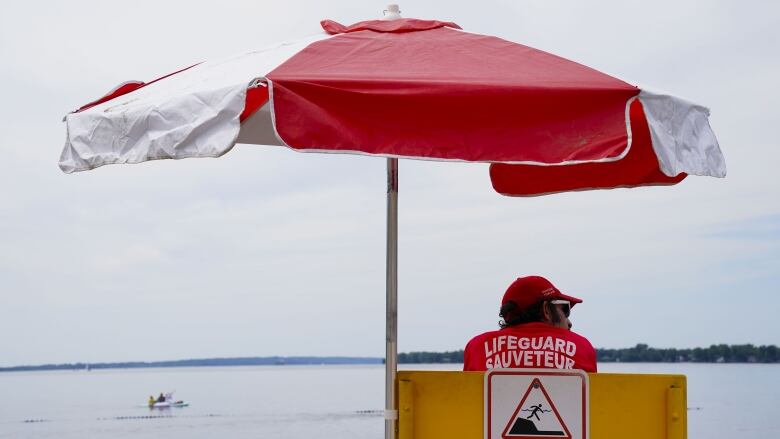Lifeguards at Ontario's provincial park beaches would save lives, says Lifesaving Society
Charity says two-thirds of drownings happen in rivers and lakes

If Ontario provincial parks had lifeguards at their beaches it would save lives, says the Lifesaving Society.
On Saturday, a 35-year-old man drowned in Chutes Provincial Park, west of Sudbury. In 2018, a 27-year-old man drowned at the same beach.
As with all other beaches at Ontario provincial parks, there was no lifeguard at that location.
Barbara Byers, a senior research associate with theLifesaving Society charity, which works to prevent drowningsand water-related injuries, said less than one per cent of drownings in Ontario happen in lifeguard-supervised pools or beaches.
"The Lifesaving Society believes that the safest place to swim is when lifeguards are working," Byers said.
"We know that when pools have lifeguards and selected beaches have lifeguards in Ontario, there are very few drownings."
Lifeguards required in pools, but not open water
Byers added that two-thirds of all drownings in Canada happen in open water, on rivers and lakes.
Ontario's Health Protection and Promotion Act requires active lifeguards at public pools, but there are no such regulations for public beaches in provincial parks or municipalities.
"And really, it's often up to municipalities to elect to have lifeguards for the protection of their populations," Byers said.
The Ministry of the Environment, Conservation and Parks does loan out personal flotation devices in about 70of the province's 340 provincial parks, said spokesperson Gary Wheeler, in an email to CBC News.
That program is available at Chutes Provincial Park and more than 30others across northern Ontario.
'Better than nothing'
"That's better than nothing, I think," Byers said.
She added that parents are likely to have their children use personal flotation devices when they're in the water, but many adults are less likely to use them.
"Many adults are maybe not so likely to wear one for fear other people would think they're not a capable swimmer," Byers said.
Byers added that it's cheaper to loan out life-jackets than to hire lifeguards.
The Lifesaving Society found there were 52 drownings in Ontario provincial parks from 2008 to 2017. The vast majority of deaths during that time period all but onewere male.
She says half of those were among people swimming and a quarter were related to boating.
Taking safety 'very seriously'
In his email, Wheeler added that the Ministry of the Environment, Conservation and Parks takes the safety of Ontario parks visitors "very seriously."
"While Ontario Parks does not provide lifeguards or a beach patrol in designated public swimming beaches, information and education promoting waterfront safety is provided to visitors," the email said.
He adds that while drownings do occur in designated public swimming beaches, the vast majority of them occurred at natural water features or other non-designated areas near water, or in incidentsinvolving a watercraft.
Wheeler says Ontario Parks regularly reviews drownings that occur in parks and reviewswater safety programs.
With files from Kate Rutherford












_(720p).jpg)


 OFFICIAL HD MUSIC VIDEO.jpg)
.jpg)



























































































